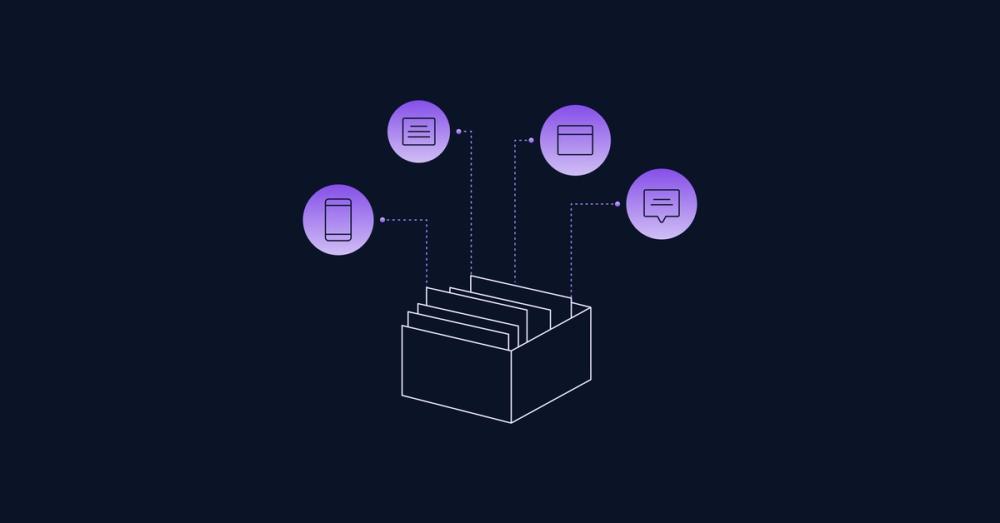Transforming Personas: From Outdated Artifacts to Dynamic, Data-Driven Tools

This post is part of a series
Personas
null
What is a Persona?
6′ reading timeUnsucking Personas - A step-by-step Tutorial.
8′ reading timeWhy Personas Suck
8′ reading timeTransforming Personas: From Outdated Artifacts to Dynamic, Data-Driven Tools (currently reading)
12′ reading timeCreating Stakeholder Buy-In: How to Make Personas Work for Your Team
7′ reading time
In my first blog post of this series, you might have gotten the impression that I never use personas and think they’re useless. But that’s not the case. I believe personas can be a powerful tool to develop user empathy and bring teams closer to their customers. Based on the reasons why I initially thought personas suck, I had to rethink my approach to make them useful, dynamic, and rooted in data. After spending months with the amazing team at Dinghy, we developed a process that I find truly effective—not perfect, but significantly better than anything I’ve found on the internet. Here’s our step-by-step approach to creating rigorous and accurate personas.
Step 1: Understand the Business Link to this headline
“If I had an hour to solve a problem, I'd spend 55 minutes thinking about the problem and five minutes thinking about solutions.” — Albert Einstein
This quote encapsulates the problem-solving process around product development. It’s easy to jump to solutions, but most of your time should be spent deeply understanding the problem. When formulating personas, the first step is to understand the business and its need for personas. This means diving deep into the company's goals, market positioning, and the specific challenges they face. Ask questions like: How will personas be used within the organization? What are the key decisions that personas will influence? Are there existing internal conflicts or gaps in understanding that personas can help address?
Understanding these aspects provides a solid foundation for creating personas that are not just accurate but also highly relevant to the business context. It ensures that the personas are aligned with strategic goals and can effectively guide decision-making processes. This approach also helps in setting clear boundaries for the research, ensuring that it is focused and purposeful.
Step 2: Conduct Secondary Research Link to this headline
After understanding the aim of creating personas, the next step is to conduct Secondary research. The usual next step is primary research in the form of ethnographic study, interviews and/or focus groups. However by opting to focus on secondary research you can save resources, but it still requires a significant time investment to find the right data and conduct thorough analysis. Secondary research allows you to gather a broad range of data that provides context and background information. For example, analyzing industry reports can reveal emerging trends and shifts in consumer behavior, while academic studies might offer insights into underlying psychological or sociological factors influencing customer decisions. This research culminates in a literature review or high-level findings that can be sorted into preliminary personas or themes, which serve as a foundation for more detailed primary research. This type of research helps explore the size, scope, and trends of your target market, as well as the competitive landscape, customer preferences, and pain points. Sources for secondary research include government reports and statistics, academic and industry publications, trade associations, media outlets, and online databases.
Step 3: Create Customer Segments Link to this headline
To create customer personas through secondary research, start by selecting the segments you want to focus on and gather data from various sources. Customer segmentation involves dividing your target market into smaller groups based on common characteristics such as demographics, psychographics, behavior, or needs. This helps you understand your customers better and optimize your resources.
Define and describe each persona, including their goals, motivations, challenges, and preferences. For example, you might segment customers based on their purchasing behavior, lifestyle choices, or specific needs related to your product. This process helps identify key user groups that share similar characteristics and pain points, providing a clearer picture of your diverse customer base.
To create effective customer segments, you need to define your market and objectives clearly. Identify relevant segmentation variables that are meaningful for your business context, such as age, income level, geographic location, or technology usage. Collect and analyze data to profile each segment comprehensively, highlighting unique traits and commonalities. This detailed segmentation forms the backbone of your persona development, ensuring that each persona is grounded in actual market data.
Step 4: Conduct Primary Research Link to this headline
Primary qualitative data is crucial for deeply examining the findings from step 2 and adding context to the developing personas.Primary research goes beyond surface-level observations, capturing the nuances of user behavior and preferences. For instance, interviews can reveal how users interact with a product in real life, what challenges they face, and what motivates their choices. This qualitative approach provides a rich, detailed understanding of users that quantitative methods might overlook.Because of the resource intensiveness, usually, the goal of the primary qualitative research is to get a deep understanding of users, instead of broad understanding. Secondary research provides a broad understanding of the target audience. Primary data in persona research should help understand the how and why of user behaviour in higher detail than secondary research alone.
Step 5: Analyze and Synthesize Data Link to this headline
we used affinity mapping as well as a codebook for data analysis. This method involves grouping data points based on behavioral variables found during research. The goal is to identify patterns and themes that can inform the creation of personas. Affinity mapping helps in organizing vast amounts of data into manageable clusters, making it easier to synthesize insights and create coherent persona profiles.
During this stage, it’s important to look for recurring behaviors, attitudes, and motivations across different data sources. For example, you might discover that a significant portion of your target audience shares a common frustration with a specific feature of your product or values a particular benefit. These insights help in building a comprehensive understanding of your users and ensure that the personas are representative of real-world behaviors and needs.
The synthesis process also involves distilling complex data into key attributes that define each persona. This includes identifying the most relevant characteristics that influence user behavior, such as their goals, pain points, and decision-making processes. By organizing and prioritizing this information, you create personas that are both detailed and actionable, providing valuable guidance for product development and marketing strategies.
Step 6: Refine the Personas Link to this headline
Next comes the refinement stage. It’s essential to combine and prioritize the personas. If you end up with a large number of personas, categorize them into primary, secondary, and, if necessary, complementary groups. At the end of this stage, aim for roughly 3–5 primary personas with clearly defined characteristics, depending on the project's scope. This helps focus your efforts on the most critical user groups, ensuring that the personas are manageable and actionable.
Refinement involves critically evaluating each persona to ensure they accurately reflect the diversity of your user base. Consider how each persona aligns with your business goals and whether they represent a significant portion of your target market. This process may involve merging similar personas or revising attributes to better capture the unique traits of each user group.
Additionally, involve stakeholders in the refinement process to ensure that the personas resonate with different teams, such as marketing, product development, and customer service. Their feedback can provide valuable insights and help ensure that the personas are relevant and useful across the organization. By refining your personas, you create a focused and cohesive set of profiles that effectively guide your strategic decisions.
Step 7: Create the Personas Link to this headline
I advocate for using ‘artistic freedom’ sparingly when creating persona narratives. Each sentence should be backed by traceable data to ensure accuracy and relevance. Personas should be specific enough for the product team to empathize with easily, yet broad enough to avoid becoming outdated quickly.
Creating effective personas involves balancing detailed descriptions with practical usability. For instance, provide specific information about the persona’s background, needs, and behaviors, while avoiding excessive details that might make the persona less flexible. Use data-driven insights to create a realistic and relatable portrait of each user group, highlighting key characteristics that are directly relevant to your business context.
While it’s impossible to create a persona entirely free of bias or stereotypes, acknowledging and documenting potential flaws in the personas can help the team navigate and be mindful of decisions. This critical reflection on the personas' limitations fosters a more nuanced and empathetic approach to user-centered design. Additionally, regularly updating the personas based on new data and feedback ensures they remain relevant and accurate over time.
Conclusion Link to this headline
In summary, while traditional personas have their limitations, our new approach at Dinghy seeks to address these shortcomings by grounding personas in rigorous research and ongoing refinement. We focus on understanding the business context, conducting thorough secondary and primary research, creating detailed customer segments, and continually analyzing and refining our personas. This dynamic approach ensures that our personas remain relevant, actionable, and genuinely useful in guiding product development and user engagement strategies.
By adopting this method, we’ve turned personas from static, outdated caricatures into dynamic, data-driven tools that foster a deeper understanding of our users and drive more effective decision-making across the team. So, while personas might have sucked in the past, with the right approach, they can indeed become a vital asset in creating user-centered experiences. This process not only enhances our understanding of the users but also strengthens the alignment between business goals and customer needs, leading to more successful and impactful products and services.


